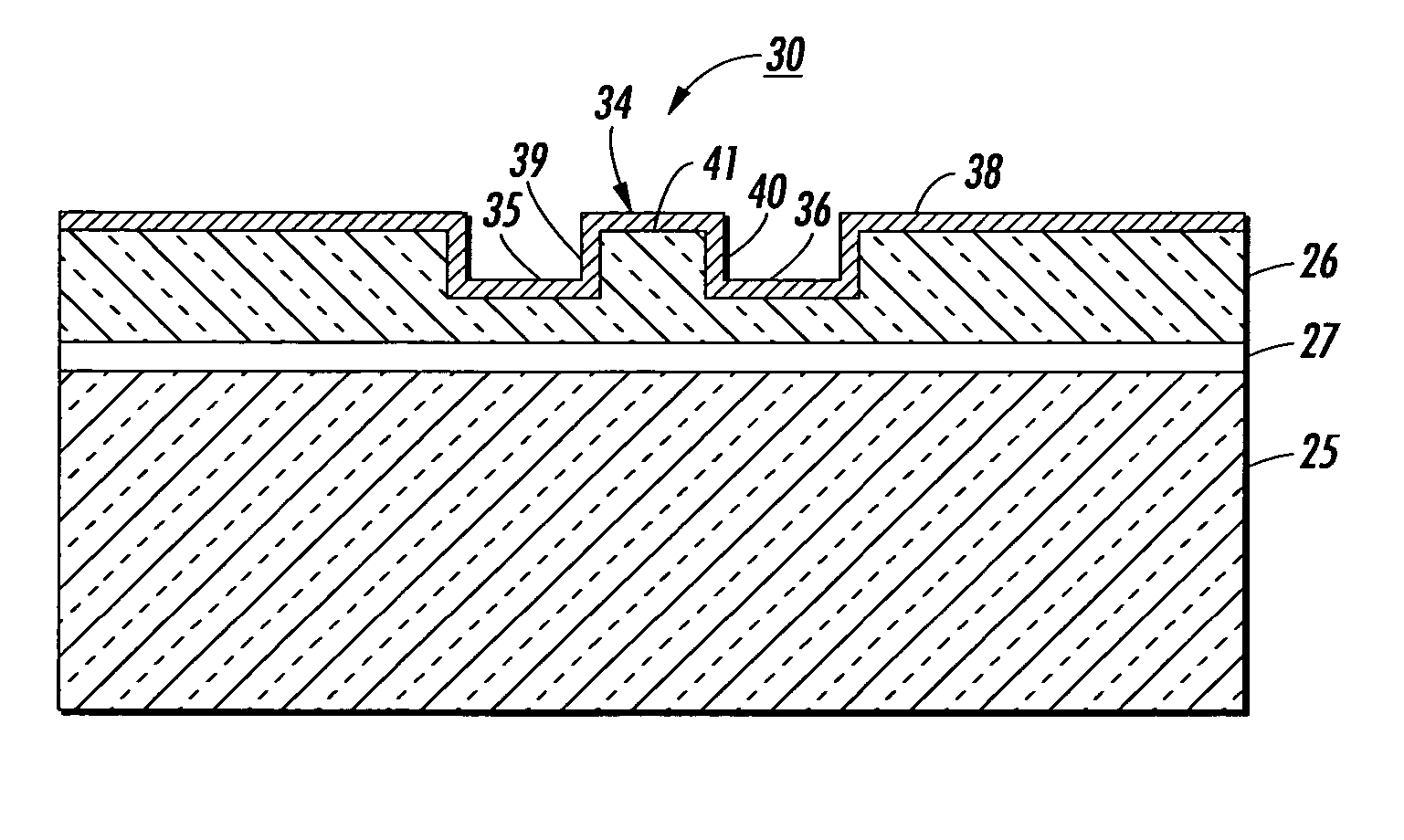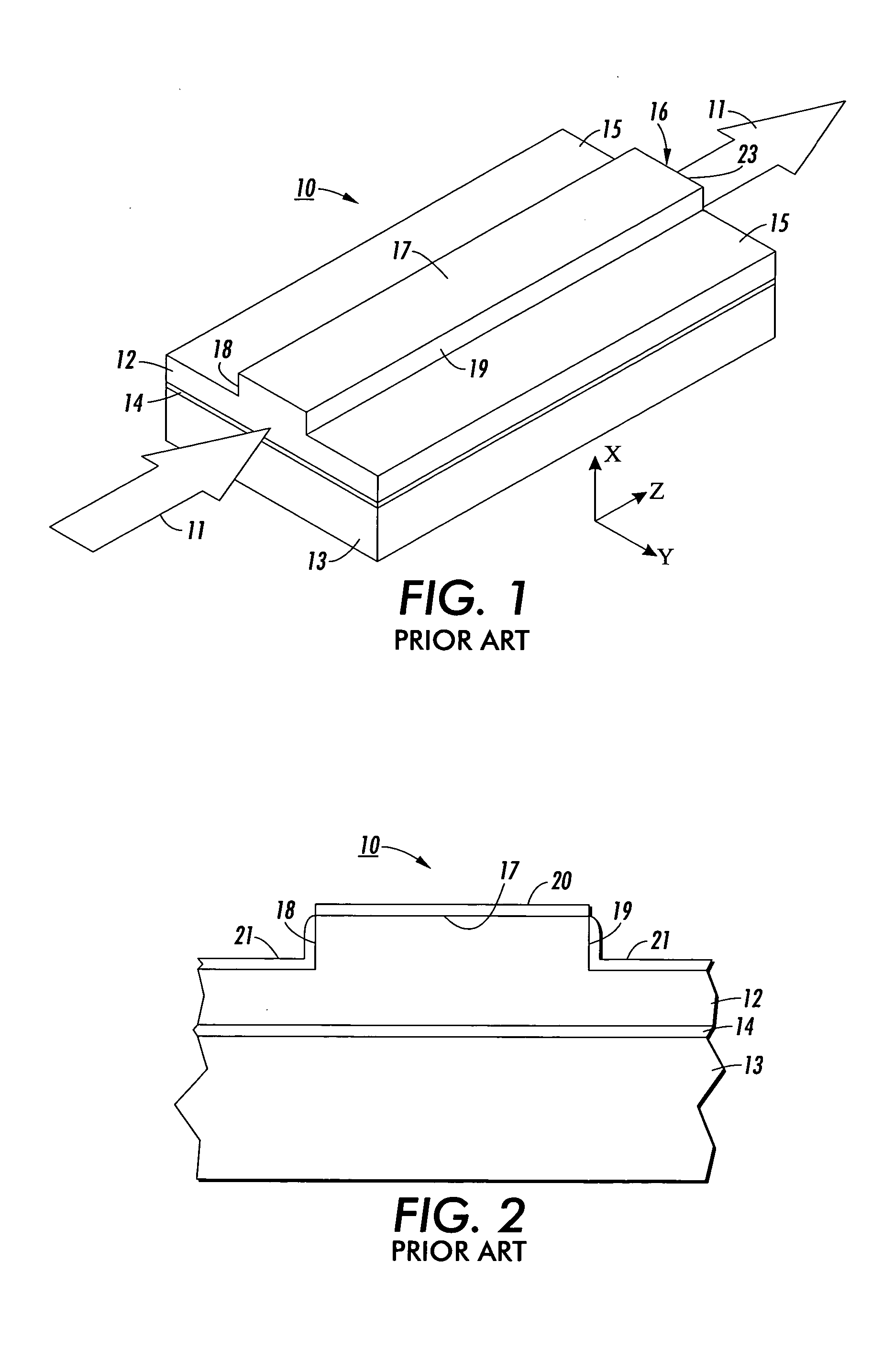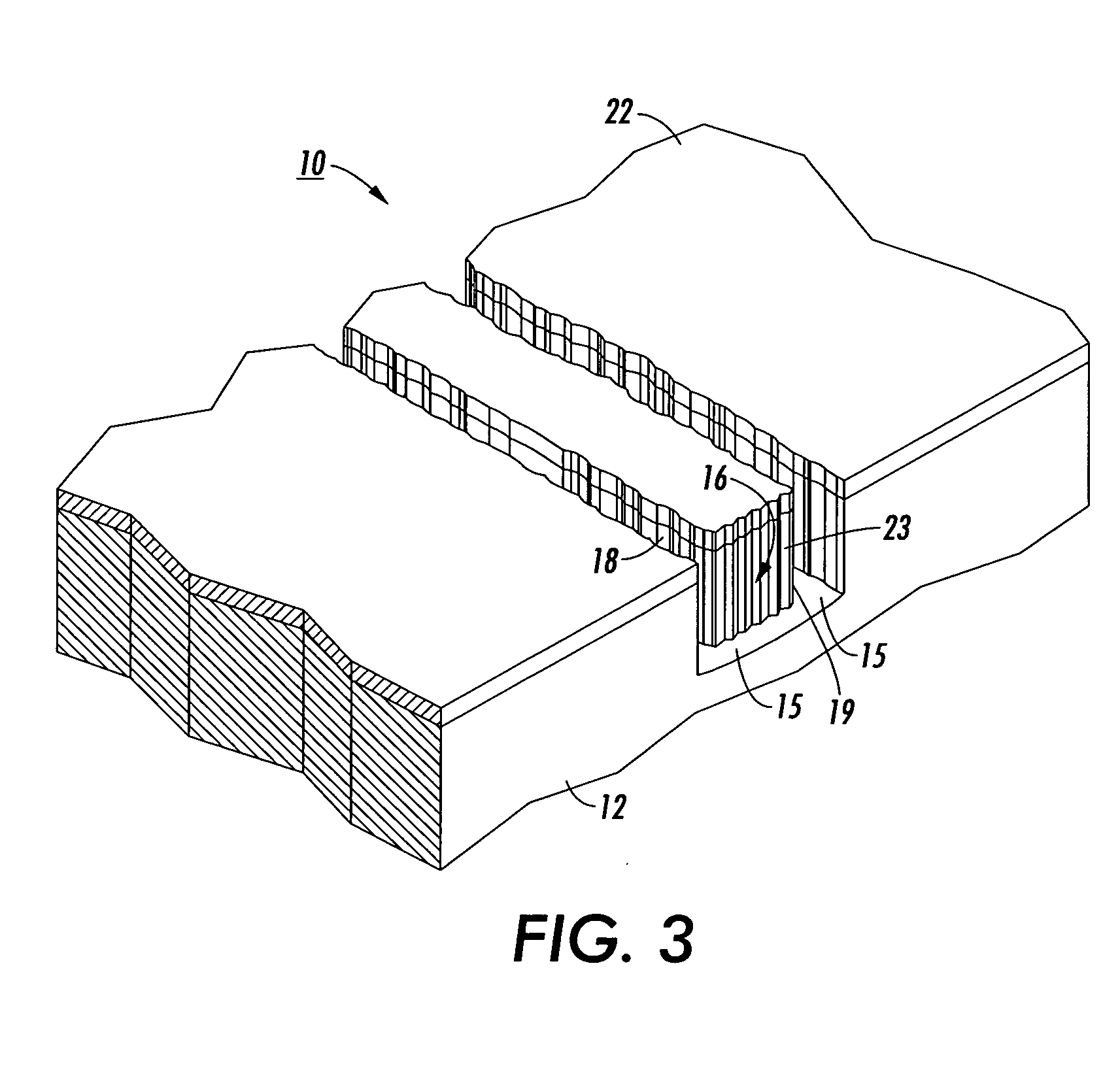Low loss silicon waveguide and method of fabrication thereof
a technology of silicon waveguide and low-loss silicon, applied in the direction of optical waveguide light guide, optics, etc., can solve the problems of affecting the dispersion of polarization modes, the oxide cladding layer will not work for micro-optical systems as a final step in the fabrication process, and the scattering of light propagating along the waveguide, so as to reduce optical loss and reduce optical loss.
- Summary
- Abstract
- Description
- Claims
- Application Information
AI Technical Summary
Benefits of technology
Problems solved by technology
Method used
Image
Examples
Embodiment Construction
[0018] In FIG. 1, an isometric view of a typical prior art silicon rib waveguide 10 is shown having a coordinate system with axes denoted by x, y, and z. The longitudinal z-axis indicates the direction of light propagation, indicated by the large arrows 11, and the transverse y-direction and x-direction will be referred to as horizontal and vertical direction, respectively. The polarization mode of the propagated light is defined by the magnitude of its transverse electric (E) and transverse magnetic (M) components. If the polarization mode has dominate Ey and Mx components and minor Ex and My fields, the light is called transverse electric (TE) polarized. If the polarization mode has dominate Ex and My fields and minor Ey and Mx components, the light is called transverse magnetic (TM) mode.
[0019] The waveguide 10 generally consists of an upper silicon substrate 12, usually a single crystal silicon, bonded to a lower usually thicker silicon substrate 13 with a layer of insulative m...
PUM
 Login to View More
Login to View More Abstract
Description
Claims
Application Information
 Login to View More
Login to View More - R&D
- Intellectual Property
- Life Sciences
- Materials
- Tech Scout
- Unparalleled Data Quality
- Higher Quality Content
- 60% Fewer Hallucinations
Browse by: Latest US Patents, China's latest patents, Technical Efficacy Thesaurus, Application Domain, Technology Topic, Popular Technical Reports.
© 2025 PatSnap. All rights reserved.Legal|Privacy policy|Modern Slavery Act Transparency Statement|Sitemap|About US| Contact US: help@patsnap.com



